Building an Understanding of AAC in Your Workplace
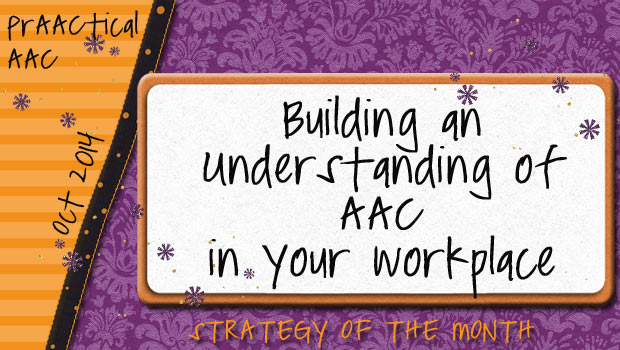
October is International AAC Awareness Month and giving us the perfect opportunity to go beyond our normal therapy-assessment-paperwork routine to spread awareness of AAC. Here are some thoughts for 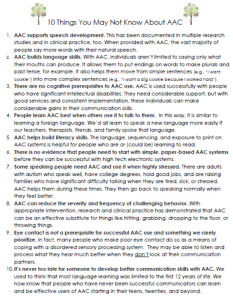 how to do that in the workplace.
how to do that in the workplace.
- Inform: You’re probably already spreading the word about AAC as often as you can, but here are a few more ideas to help others gain an understanding of what can be done to support people with little or no functional speech.
- Create a brief AAC-related public service message that is delivered on morning announcements or staff meetings (E.g., “Everyone communicates, but some students with disabilities have difficulty talking. Did you know that just because some students can’t talk, they can still understand what you say? Special technology is sometimes used so they can better express themselves. Not only does that help them in the moment, but it may also improve their ability to talk”). Feeling really ambitious? Enlist the support of individuals who use AAC to deliver the announcement.
- Print and distribute handouts about AAC. You can use ours, 10 Things You May Not Know About AAC, designed for our colleagues in schools, clinics, and hospitals.
- Highlight a success story on a bulletin board, organization newsletter, website, Facebook page or at a meeting
- Debunk old myths: Display posters (You can download some of ours in the AAC eToolbox under the Miscellaneous category.)
- Host a showing of an AAC video, like Only God Could Hear Me,
- Encourage a colleague who is supporting people with AAC needs. One of the best ways to inspire someone is to recognize their efforts and show appreciation for
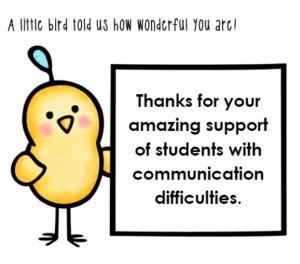 what they do. You’re welcome to use our little handout to jot them a note showing that their efforts have been noticed.
what they do. You’re welcome to use our little handout to jot them a note showing that their efforts have been noticed. - Host a silent coffee break: Print out some communication boards, pull out some AAC devices, and put on the coffee. Invite some colleagues to stop by and get a taste of what it’s like to communicate without speech.
Do you have ideas for promoting AAC where you work? We’d love to hear about them.
Filed under: PrAACtical Thinking
Tagged With: AAC Awareness Month
This post was written by Carole Zangari

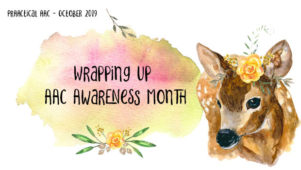

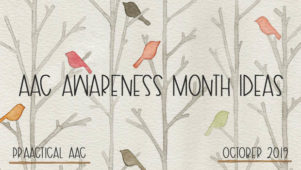
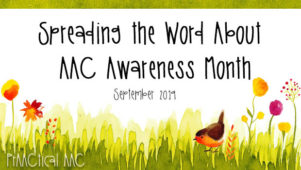
2 Comments
Hi, Carole!!! I absolutely love this! I have been asked to present at our monthly Autism meeting and will definitely be using some of these resources. I have one major hurdle with my teachers that you may be able to help me with… They feel that when kids are asked to label (“tact” in our world) and use their expressive language through pictures, they are just matching. They don’t see it as truly communicating. It makes me want to scream!!!! How can I make them understand? I know you have something on the blog, I just can’t put my fingers on it.
Thank you so much for what you do for us and all of our patients and students. Your website is such a vital resource for us!!!!
So glad that the posts are helpful. I have worked with many professionals like this and I’ve come to see it as a journey. I’ve had much more success when this becomes an ongoing dialogue and learning experience rather than when I’ve expected them to change their attitudes based on a single answer or consult. Anyway, labeling is part of normal human communication. When a toddler points at my mug and I say ‘coffee,’ I might get a nice imitation (“tawtee”). That’s how they learn. For AAC kids, seeing the symbol as we model it is just part of their receptive language learning experience. I don’t work on labeling often so I don’t think I have a post on it, but you’ve given me a great idea. Stay tuned!